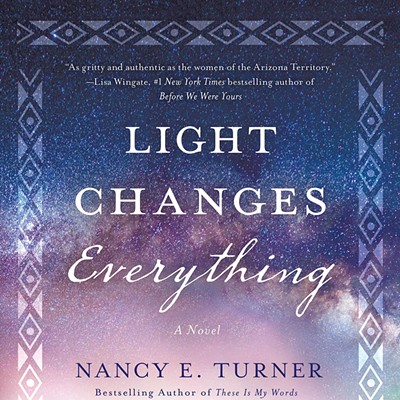Hat Dance left a trail of strong images: men digging holes at the edge of a brilliant orange field of marigolds; the fiesta's deafening fireworks exploding in a dark sky; women at the stream washing clothes, gossiping under the canopy of trees; early morning mist rising from an ancient pyramid; bands, dancers, prancing horses, drunks swaying and falling; a pagan ceremony played out behind the priest's back. But image alone doesn't make a great book.
Lee White, cultural worker/journalist, his Mexican photographer/friend Checo Rivera, Lee's estranged daughter/filmmaker Courtney and her cameraman/boyfriend Kevin travel to the Indian village of Huatepac. They hope that Courtney's grant-funded filming of the infamous Fiesta de Santiago Apóstol will act as a cover for Lee's free-lance documentation of a rebellion, thus protecting it from government scrutiny.
Everyone in the car possesses an angst that could be clarified, complicated or solved during this trip, but their development was too dependent on clunky dialog to fully materialize. Unlike the skill Thomas used in showing the rich images of village life, he relied on a more superficial telling to reveal the main characters' emotional landscape. For example, Courtney addresses Checo: "You are the most arrogant man I ever met. Kev's immaturity wears thin, but he is kind and honest and open. Still, I guess you're right about Daddy. He really does seem at odds with his own people, like me. He does better down here. He's more comfortable and relaxed with Felipe and Elena than I've ever seen him. He relies on them. With them he doesn't have that looking-for-the-exits way about him. He gets annoyed with me because I'm a gringa and I remind him of my gringa mother. I guess being an American is a big strain on him."
In Hat Dance's defense, the plot throws out one obstacle after another, kicking in with clueless Chicano Kevin, who brought along a gun in hopes of presenting it as a gift to endear himself to the rebels Kevin hopes will put him in touch with his Mexican heritage. Before they reach the village, they're tailed by a menacing mercenary and stopped by federales, led by the ominous Campos.
The plot twists and turns in mostly believable ways. Not only does Kevin not get to deliver his gift; he finds himself kidnapped. Without knowledge of Spanish, he's unable to convince the rebel that he's sympathetic. And that gun? The decision to bury it for safe keeping seemed like a good idea, but then Lee leaves the fiesta to unbury it so he can feel it in his hands. I don't buy any motive for such a dangerous move except for the author to show his hand and set in motion an assassination and self-recrimination.
Smaller players delivered the flavor of the mountain community, from the school teacher/soccer player-turned-rebel to the women collecting water at the stream while solving the rebellion with a brilliantly simple plan that moves quickly into action. The Piñedas (Lee's compadres), storekeeper Señora Maldonado, the finger-missing firecracker vendor and voluptuous movie actress who flew in on the milk run and claims the Indians as her people, all contribute strong threads.
Thomas includes serious issues about social justice and power, although pedantic dialog of a do-gooder nun doesn't do it justice. But Thomas can get it right. Want to know how bad Campos is? He's down in the mouth about having been passed over for training at Fort Benning in Georgia (notorious for having trained Central Americans who committed atrocities during Central America's worst times).
Other reviews of Hat Dance have been glowing, so my criticism makes me feel like the worm Campos calls the village's mayor. Hat Dance has enough action, humor, sex and friendship that I could see the plot optioned as a film, but I wish Thomas had bartered one of his trips for some editing direction. Sound advice might have convinced him to cut the underscoring, quit quoting extraneous phrases like "the other side" and drop 90 percent of the flatulence references. If he could have learned to trust his characters and readers more, he might have transformed this OK book into a great one.








